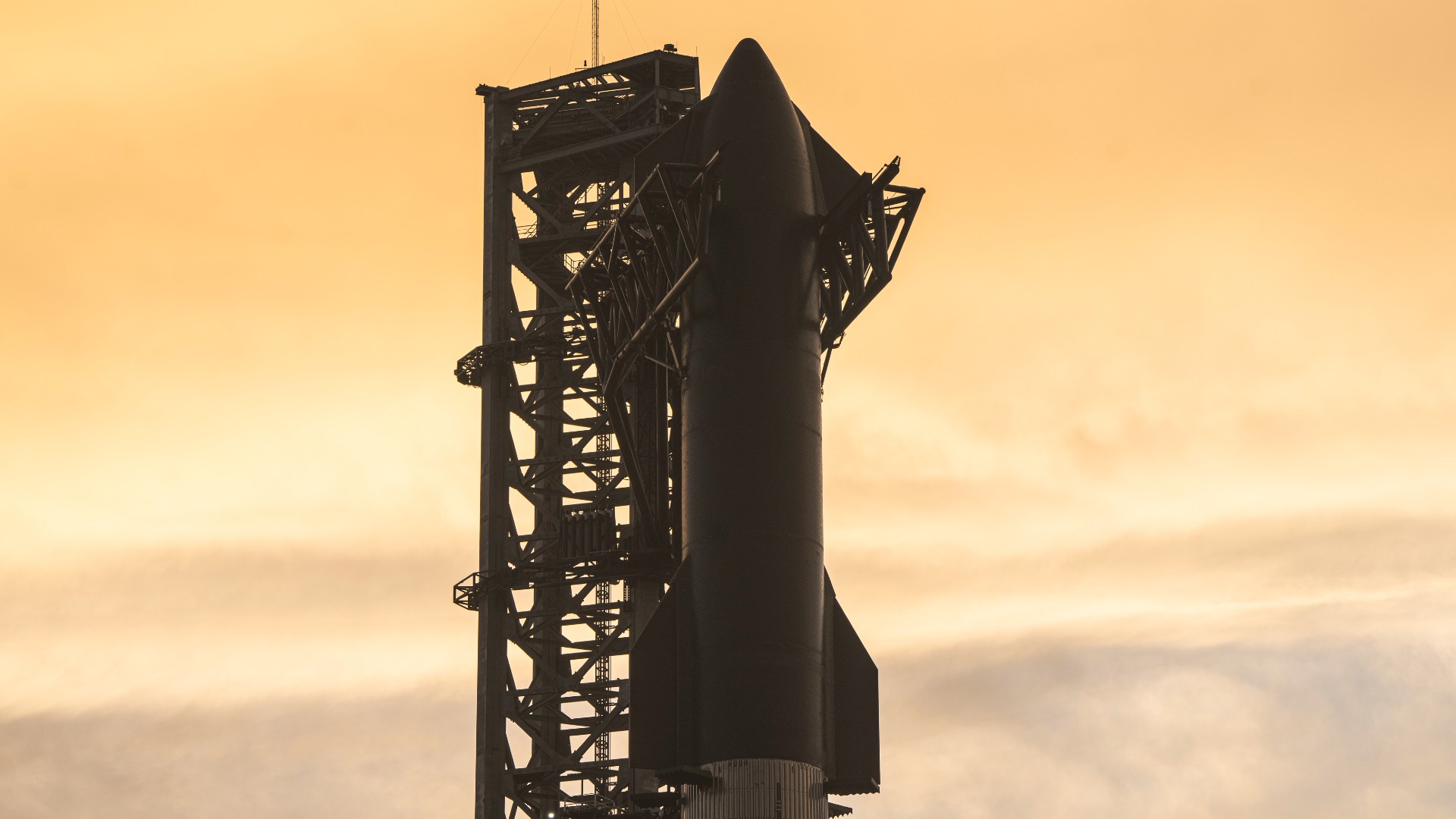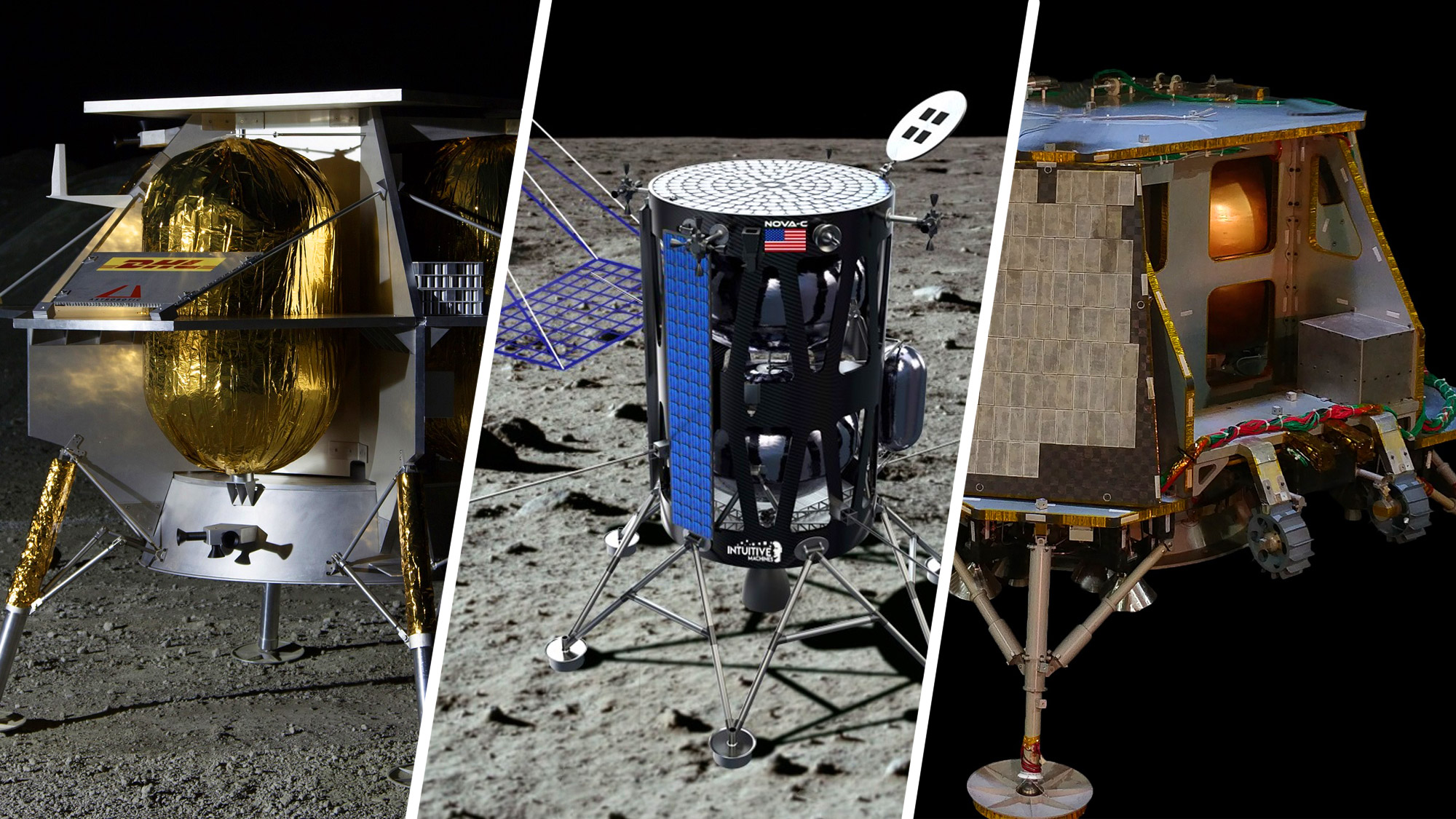SpaceX veterans create startup to power spacecraft with moon water
Their first test of a water-powered spacecraft is expected in low Earth orbit in 2024.

Water may power the next generation of spacecraft, if a trio of SpaceX veterans has their way.
Brothers Kirby, Robert and Ryan Carlisle plan to harvest water from the moon and use it to fuel future vehicles. They recently closed a $2 million funding round, led by Type One Ventures, to kickstart water propulsion with their company Argo Space. While still a five-person startup, they have big plans for the near future.
They plan a demonstration flight in Earth orbit in 2024, to start commercial service around 2025 if all goes to plan, and to expand to the moon later in the decade. The moon has ample water ice on its surface that could be harvested for future missions. Where exactly Argo will land on the moon will depend on what water resources future spacecraft confirm, whether it be at the poles or in other locations.
Space.com caught up with the three brothers, who worked in a variety of roles at SpaceX before Argo Space, to learn more about their plans for water-powered spacecraft in Earth orbit and on the moon.
Related: Water on the moon is more common than we thought, studies reveal
Space.com: How did the company get start?
Robert Carlisle, CEO: The three of us have wanted to start a space company together since we were children. But then, specifically, after SpaceX, we wanted to do something that would help really expand humanity's presence in space, with in-space resources. We also wanted to make sure we were making a commercial business, not just a sort of purely future lunar-focused business. I did commercial sales for a while at SpaceX, and one of the things I saw there was how hard it is for really small satellites to get access to orbits beyond LEO [low Earth orbit.]
Breaking space news, the latest updates on rocket launches, skywatching events and more!
Space.com: Tell me about your first vehicle.
Robert Carlisle: The Argonaut is what we're calling our initial transportation vehicle. It's named after the sailors on the Greek mythical ship, the Argo. It's a water propellant vehicle and it's planned on being fully reusable from day one. It offers high delta [high-altitude] orbits, and on-orbit pickup of payloads.
Space.com: How does the water system work?
Ryan Carlisle, chief technology officer: Basically, you take steam, and in this diffuse vapor form you hit it with RF [radiofrequency] energy or other forms of electric fields. It turns the water into a plasma, which is extremely hot. And from there, it works similarly to any other rocket engine. You have a very, very hot gas heated by this electrical energy and it exits the back of the engine at high velocity. The prototype we made was based on years of research. There are a bunch of published papers going back to the 1970s or 1980s on similar styles of plasma propulsion, including with NASA.
Space.com: Why use water as a propellant?
Kirby Carlisle, chief operations officer: Water has a lot of great properties about it. It's easy to store in space, It can be used efficiently as propellant. It's of course necessary for human life. It's super delicious; my favorite thing to drink. And it is serendipitously available in large quantities on the lunar surface, the closest celestial body to Earth, as well as many other places throughout the solar system.
Related: Hidden water source on the moon found locked in glass beads, Chinese probe reveals
Space.com: Before you go to the moon, what do you want to do first?
Kirby Carlisle: Our initial target market is this niche of high-energy orbits for small satellites, which is not really well served right now, even with other vehicles and solutions that people call tugs. So our vehicle can actually pick something up in LEO, and then take it out to geostationary [orbit] or cislunar space.
Space.com: So if I'm understanding you correctly, what you're saying is that you're going to be launching your tug to a convenient orbit, and then as spacecraft come by, you can snag them and then go up to another orbit, and down again. How would you be refueling them?
Robert Carlisle: We plan to launch water tanks, initially from Earth, and have them in that same base orbit waiting to meet with the Argonaut after it finishes a mission. Imagine the SpaceX Transporter launches, the big rideshare launches [for satellites]. We would launch an Argonaut and water tank on one of those.
We don't want to put too much detail yet into how we'll catch the satellites, but the key thing is we're trying to do it without requiring the customer to put any additional hardware on their spacecraft. Our demonstration flight won't go quite that high, however. We'll demonstrate the propulsion system and we'll do some level of of the RPO — the rendezvous and proximity operations — with the payload.
Related: Low Earth orbit: Definition, theory and facts
Space.com: What's the plan for your lunar operations?
Kirby Carlisle: Commercial access to the moon and use of limited resources. We've always had a bit of a chicken and egg problem: for companies to plan on using whatever resources, someone needs to be producing those resources. But for someone to produce the resources, there needs to be a clear demand. So at Argo, we are creating that demand by turning these resources into transportation, using lunar water as propellant.
Robert Carlisle: We want to start generating revenue with the [Earth] orbital service. But in parallel, we're working towards this water extraction. In the late 2020s, we want to be actually using water we harvest from the lunar surface. Then we want to scale up to a larger vehicle, sort of like a 10,000 kilogram [22,000 pounds] payload class. Think of something that could pick up a SpaceX Starship sort of payload in LEO, and then take it out to lunar orbit or to geo[synchronous].
We do intend to partner with lunar lander companies. If we can just build up the harvesting and the extraction technology and put it on someone else's lunar transport systems, that's fine for us. We'll take care of the LEO to lunar orbit part, and back to Earth.
This interview has been edited and condensed.
Elizabeth Howell is the co-author of "Why Am I Taller?" (ECW Press, 2022; with Canadian astronaut Dave Williams), a book about space medicine. Follow her on Twitter @howellspace. Follow us on Twitter @Spacedotcom or Facebook.

Elizabeth Howell (she/her), Ph.D., was a staff writer in the spaceflight channel between 2022 and 2024 specializing in Canadian space news. She was contributing writer for Space.com for 10 years from 2012 to 2024. Elizabeth's reporting includes multiple exclusives with the White House, leading world coverage about a lost-and-found space tomato on the International Space Station, witnessing five human spaceflight launches on two continents, flying parabolic, working inside a spacesuit, and participating in a simulated Mars mission. Her latest book, "Why Am I Taller?" (ECW Press, 2022) is co-written with astronaut Dave Williams.



